- CLOSE THE YIELD GAP
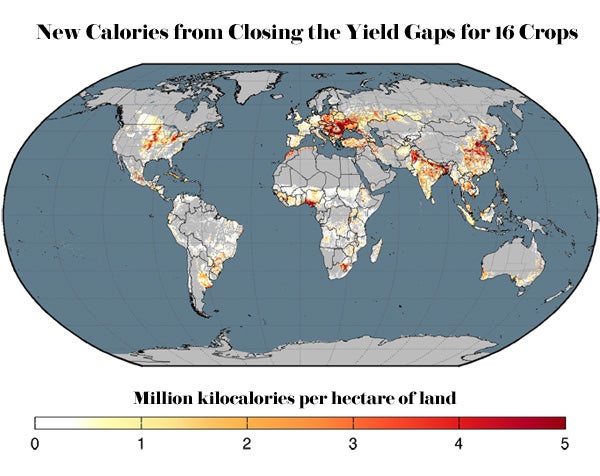
CLOSE THE YIELD GAP:
An international research team led by Jon Foley at the University of Minnesota's Institute on the Environmenthas devised a 5-step plan to double global food production by 2050 as well as reduce the widespread environmental harm posed by contemporary agricultural practices. All maps here were produced by Jamie Gerber at the institute. Step 1 is to raise the crop yield of the world's most ineffective farms to 95 percent of the best yields attained by farmers in similar climates. Closing this "yield gap" for the top 16 crops worldwide could produce 50 to 60 percent more food.
Credit: Institute on the Environment, University of Minnesota
- MORE MAIZE
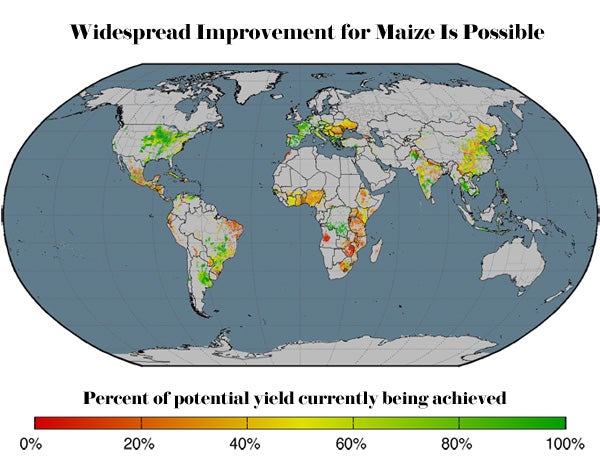
MORE MAIZE:
Improving seeds, irrigation, fertilizer use and markets would drive up yield for many crops. For example, the yield for maize (shown) could rise significantly across parts of Mexico, Africa, Eastern Europe and elsewhere.
Credit: Institute on the Environment, University of Minnesota
- LESS MEAT
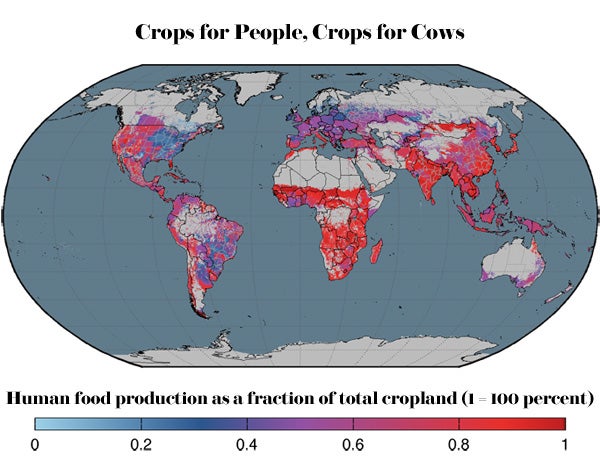
LESS MEAT:
Only 62 percent of crops become human food; 35 percent feed meat and dairy animals (the remainder is for biofuels and other uses). If humans switched to all-plant diets, all that agricultural land could produce 50 percent more human food, because feeding crops to animals that then become meat is a highly inefficient way to transfer plant energy to people. Although such a big change is unlikely, even a small shift away from meat could net many more human calories.
Credit: Institute on the Environment, University of Minnesota
- CLOSE THE DIET GAP
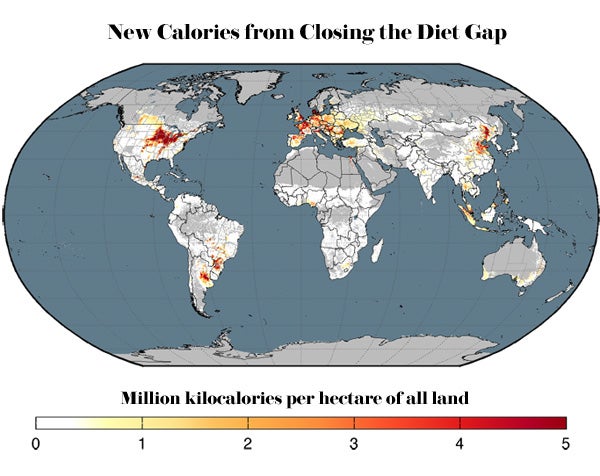
CLOSE THE DIET GAP:
If the world's top 16 crops were grown only for human food, instead of the current mix that includes animal feed and biofuels, a billion tons more human food would be available—roughly equivalent to three quadrillion kilocalories. Reducing waste is a corollary step: Roughly 30 percent of the food grown worldwide is lost to failed crops, stockpiles ruined by pests, food that is never delivered because of bad infrastructure or markets, and food that spoils or is thrown away after purchase.
Credit: Institute on the Environment, University of Minnesota
- STOP BURNING TROPICAL FORESTS
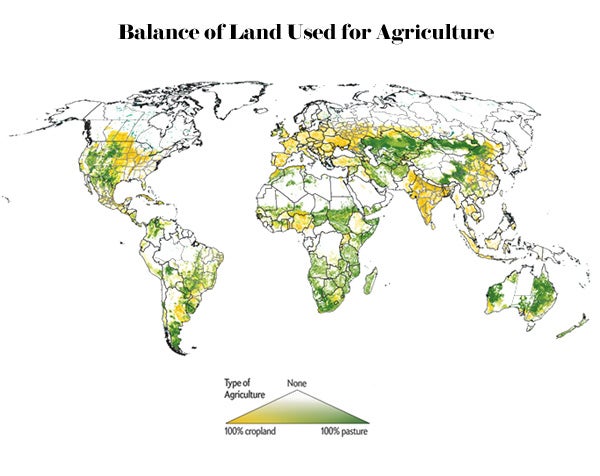
STOP BURNING TROPICAL FORESTS:
The industry of agriculture is so massive that it now constitutes a grave environmental threat. Producing even more food would severely damage the planet. Agriculture has expanded its output in recent years primarily by clearing land. Today humankind cultivates 38 percent of Earth's ice-free surface; pastures and rangelands for livestock cover two thirds of that area, and croplands cover the rest. Because most of the remaining land is desert, mountainous, tundra or urban, expansion today occurs mostly by burning down tropical forests and savannas, which releases vast quantities of carbon dioxide into the atmosphere and severely reduces biodiversity.
Credit: Institute on the Environment, University of Minnesota
- USE FERTILIZER MORE EFFICIENTLY
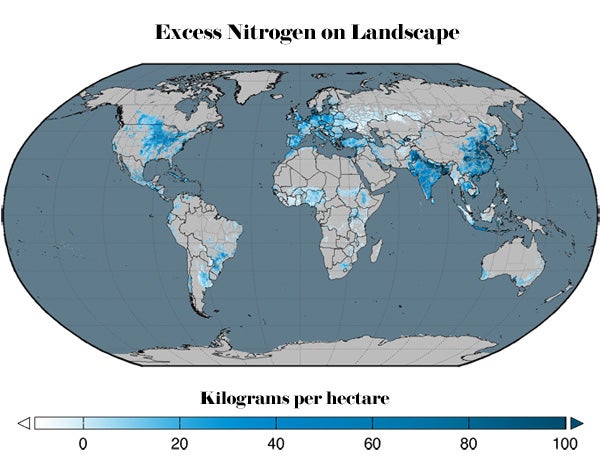
USE FERTILIZER MORE EFFICIENTLY:
Environmental damage also results from massive overuse of fertilizer. Incredible volumes of excess nitrogen, alone, run off crop fields into rivers and oceans, creating enormous "dead zones" like the one that develops annually in the Gulf of Mexico, which have grown in past years to cover areas the size of Connecticut or New Jersey. Farms in the central U.S. are extremely wasteful, but so are those in much of Europe, India and China. Foley's group estimates that 10 percent of the world's croplands account for 32 percent of the global nitrogen surplus—hot spots that could use much less fertilizer and still achieve the same yield.
Credit: Institute on the Environment, University of Minnesota